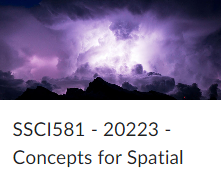SSCI-581-Week10
Terrain Analysis
Digital Terrain Model
Digital Elevation Model(DEM)
- A grid of bare-earth elevation values referenced to a horizontal and vertical datum
- Continuous surface (Raster) of topography
- Different scales; global coverage at 30m; regional coverage at 10m and some at 3m; US 1m resolution
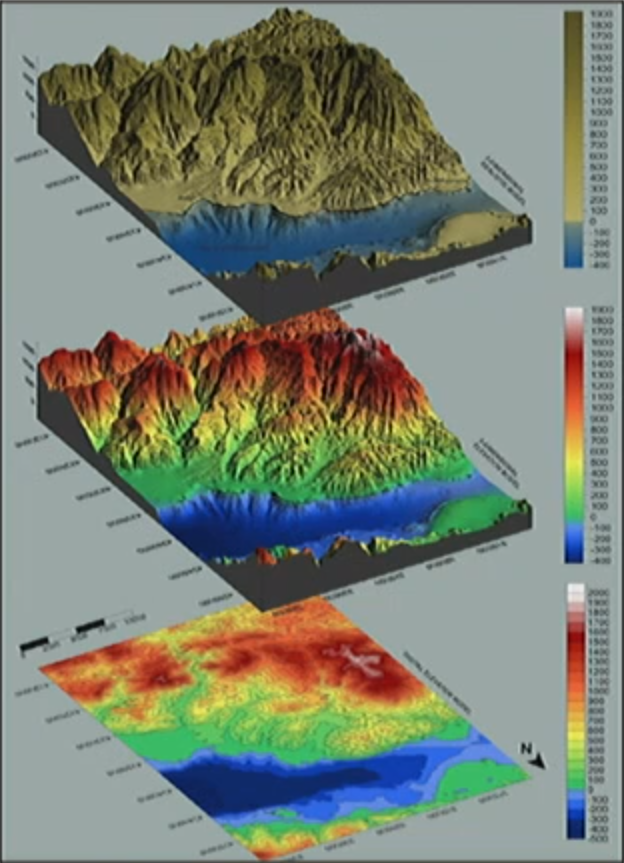
DEM from Raster to TIN Vector
-
Tin model – continuous vector (triangles)
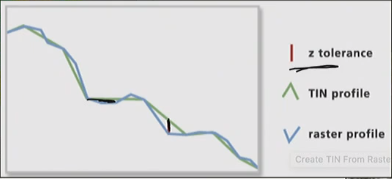
-
Z tolerance: a acceptable gap between two profiles
Digital Terrain Model (DTM)
- In the US, it means a vector dataset that can be used to create a DEM via interpolation and can augment a DEM
DTM Mass Points and Breaklines
- Breaklines (red lines in the figure) record discontinuities or sudden changes in the surface
- Mass points are point elevation values
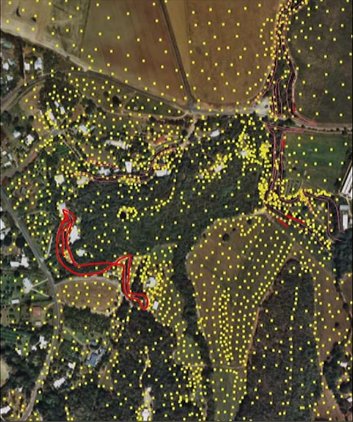
Digital Surface Model (DSM)
- True 3D surface including buildings, trees, and other landscape features

Normalized Digital Surface Model (NDSM)
- Difference between DEM and DSM for height for buildings, trees, other landscape features to create a NDSM
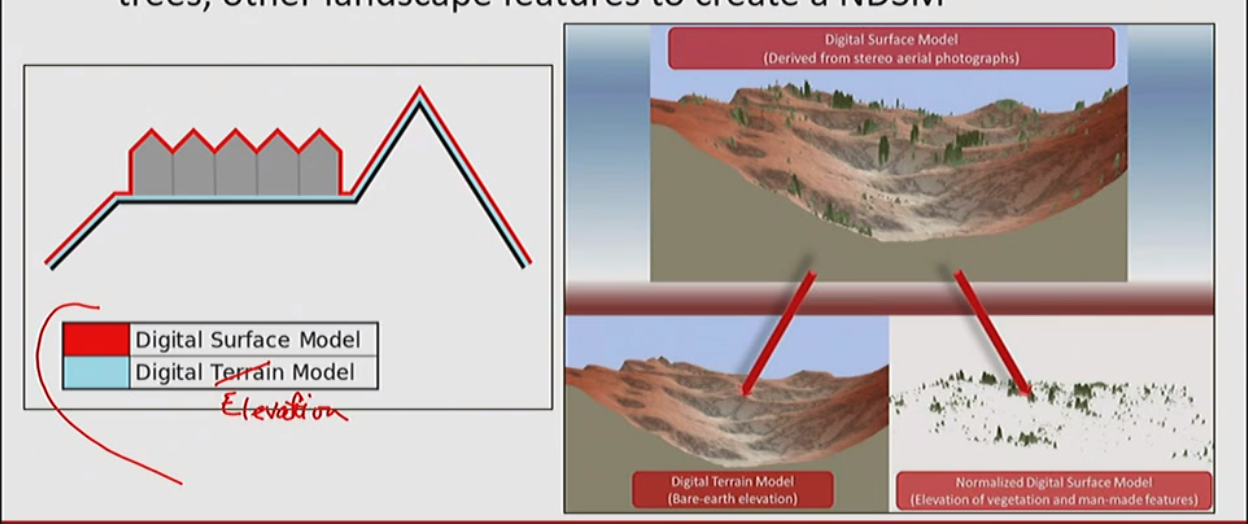
Land Surface Parameters
Slope
- The rate of change in elevation for each cell in a DEM; measured in degrees, up to 90 degree, or percent; rise/run

Aspect (方位)
- What compass direction a slope is facing; raster values are degrees of compass direction(0-360) or 1 for flat earth
Hillshade (山体阴影)
- A grayscale 3D representation of the elevation of the surface; taking into account the sun’s relative position for shading the image.
- Inputs: DEM; Azimuth and altitude (to specify the sun’s position); optionally, z-factor for scaling to add vertical exaggeration for visual effect
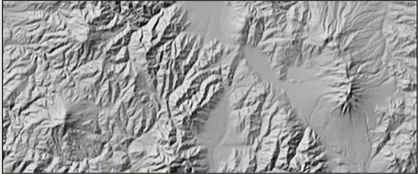
Profile Curvature and Plan Curvature
- Curvature of landscape feature along the slope plane(profile) and across the scope plane(plan)
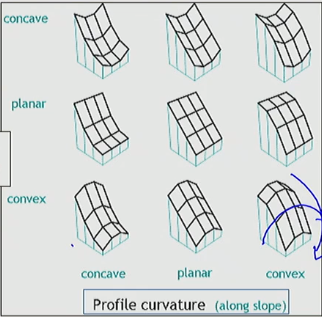
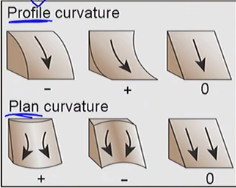
Viewshed
- Creates the area where an observer can see objects on the ground (or from the ground to a certain point); resultant raster is the number of times that each cell location in the input surface can be seen by the input observation point
Hydrologic Analysis: Flow Direction
-
Flow direction: assessment of direction water will move over the surface. Algorithms are designed which check steepness of a cell and its neighbors. This is complicated; topic of on-going research
-
Flow accumulation: calculates water accumulation based on a flow direction raster
-
Fill sinks: in reality, small depressions may fill with water and water flow will continue; in a GIS, flow accumulation will stop and restart, interrupting the smooth estimation of flow. In GIS, we need to determine what size of depressions can be ignored.
-
Watershed delineation: analyzes the extent of land that drains to a pour point

Data Source
- Where we get our DEM data from:
- DIgitized Contour Lines and Topo maps
- Shuttle Radar Topography Mission (SRTM)
- NASADEM
- Landsat
- LiDAR
- UAV
Raster Analysis
Map Algebra
- “…simple and powerful algebra with which you can execute all Spatial Analyst tools, operators, and functions to perform geographic analysis.”
- Operators: allow the mathematical operations to be performed (on raster data)
- Functions such as sin, slope, and reclassify
Local Operators
- To perform simple mathematical operations

Reclassification
- To reclassify based on weighted value or other delineation
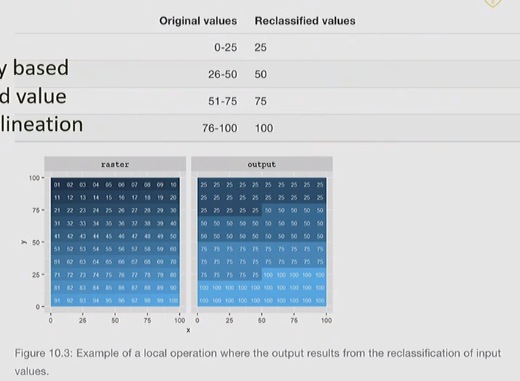
Focal Operation
-To smooth a surface; average based on neighbors; closer neighbors may be weighted

Logical Comparison
- To compare rasters to each other: Greater than >; less than <; equal to ==; not equal !=
- Return a True (1, or any non-zero integer) / False(0) raster

Boolean (Logical)
- To compare the true/false (conditional state) of raster after the logical comparisons
- If whether statement you ask is TRUE, resultant raster cell will be 1;
- Can be combined to find two rasters that meet requirements
Generalization of Raster Maps
- Change resolution (increase or decrease cell size) for clarity
- The smallest allowable size of groups of cell is the minimum mapping unit(MMU); combine cells below the MMU with neighbors to improve clarity.
Raster Overlay
Weighted Overlay
- A method for aggregating layers of rasters by weighting the layers, multiplying each value by the weight, then adding. Two tools in ArcGIS Pro: Weighted Overlay(the output is always integer) and Weighted Sum (weight * value then add)

Site Suitability and Location
- Site suitability analysis depends upon the ability to study characteristics of a location (and its nearby surroundings)
Reclassification
- Before values from different rasters can be compared and analyzed together, they must be translated into a common measurement scale
.png)
Vectors and Rasters
- Source data will likely consist of both vectors and rasters
- For weighted overlay, analyses must be done to identify the correct information about the location and transform it into a raster
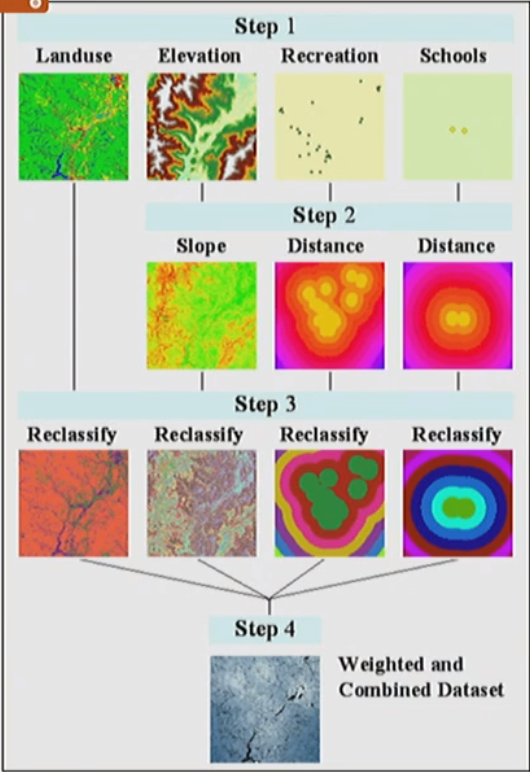
Networks, Path, and Accessibility
Networks problem
- All types of network analysis/problems:
- Route planning and optimization: shortest or fastest route
- Finding a closest facility
- Identity the service area
- Vehicle-routing problems
Network vs. Lines
- In a set of line features, such as a roads, the individual features are not aware of each other
- When the lines are added to a network data set, rules of how the individual features are related to each other can be added
- This called connectivity
Least-Cost Path Introduction
- Least-cost path analysis is narrower than network analysis and is RASTER-based
- In network analysis, movement through the network of vector features is measured and assessed based on rules of connectivity and measures of impedance
- LCP has no defined path and a path is estimated based on values in raster cells
Creating the Cost Surface
- Individual cost + individual cost = total cost value
- Each type of cost is weighted against each other

- Your final cost raster can be the result of combining many types of data. The result is one final cost surface over which the cost of movement is measured.
- With the accumulated costs and directions, the least cost path can be drawn from the source to destination sites.
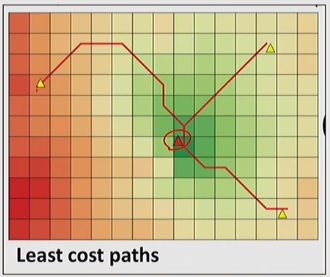
Accessibility
- Accessibility analysis of health care, emergency, or other social services studies the relative availability and distance of services to populations
Scale and Raster Analysis
Finding the Right Scale
- Researcher need to choose what scale of data to work with for a given project
- Scale of analysis should match the scale at which spatial processes operate- finer resolution data and larger scale is not always better.

